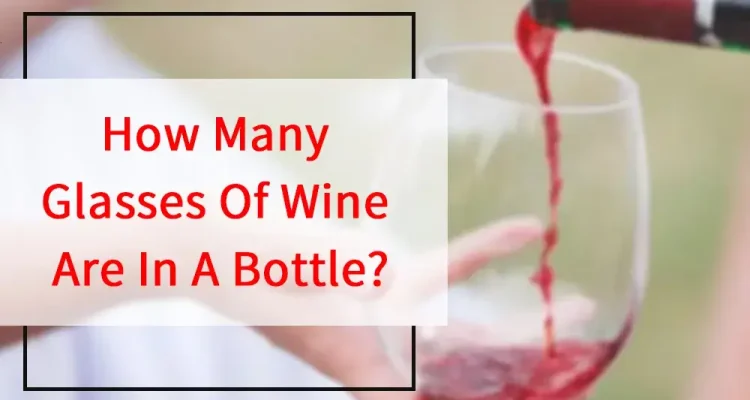You’ve probably struggled to open a bottle without a bottle opener before. Well, your struggles…
A Complete Guide About Glass Liquor Bottle-From Glass Bottle Manufacturer
With the rapid development of the employment market, various types of wine bottle packaging continue to emerge, glass bottles are gradually moving to the market in continuous development, and technology is becoming more and more mature. This article helps you understand wine bottles in depth!
Part 1: History Of Liquor Bottles
A liquor bottle is a container for holding wine.Historically, wine bottles have been presented to the world in a simple style of “soy sauce bottle”, glass material, little information and no decoration. In the earlier stage, China’s glass production technology was backward, and glass bottles were basically imported, which were “foreign products”, so the early glass bottles were commonly known as “foreign sticks”. Even the common saying still refers to a bottle of wine as a foreign wine.
Part 2: Types Of Glass Liquor Bottle
The best alcohol bottles are ones you’d be proud to display on your counter and pour a drink from. They have unique shapes, colors, or are made with expensive materials you’ll want to brag about.
There are a lot of unique bottles of liquor out there, so distilleries and breweries across the globe are revamping their packaging to stand out from the crowd. People are more attracted to cool bottles of alcohol compared to plain bottles. As much as people say to not judge a book by its cover, it’s usually the only thing we can evaluate on first impression, especially when it comes to liquor bottles!
The best liquor bottles of all time include:
- Blanton’s Bourbon
- Bombay Sapphire Revelation Collection
- Louis XIII Black Pearl
- Ladoga Imperial Collection
- Crystal Head Vodka
- Frozen Ghost Vodka
- Hibiki 17 Whisky
- Milagro Barrel Reserve Silver
- Haig Club
- KAH Tequila
- Medea Vodka Programmable Liquor Bottle
- Precious Vodka
- St-Germain Elderflower Liqueur
- Armand da Brignac Champagne
- Samurai Vodka
- Jack Daniel’s Chess Game
- Milagro Tequila Romance
- Anestasia Vodka
If you’re looking for the perfect company gifts, make a basket with cool alcohol bottles and customized glasses. Ruisheng is a good choice!
At the end of the day, people want a classy, memorable gift that’s going to make an impression. You’ll find that and more if you consider making any unique alcohol bottle in this collection part of your gift giving.
Part3: Material Of Glass Bottle
Glass bottles are manufactured by more than a dozen raw materials like quartz powder, limestone, sodium carbonate, dolomite, feldspar, boric acid, sodium sulfate, barium sulfate, zinc oxide, potassium carbonate and cullet. Glass bottle is a container which will through 1600-degree heat to melt and shaping. Glass bottle can be produced in different shapes depending on different mold. Since hot forming, it is non-toxic and tasteless and it is main container of food, medicine drug and chemical industry. Here are introduction of some main raw material of glass bottles.
1. Quartz powder: It is a hard, wear-resistant, chemical stability of minerals, the main mineral component is quartz, main chemical ingredient is SiO2. Quartz powder is milk white or colorless translucent, hardness is 7, brittle, no cleavage, conchoidal fracture, oil sheen, density of 2.65, doesn’t dissolve in acid. Main usages: filter material, high grade glass, glass product, refractory, smelting stone, precision casting, sand blasting, grinding wheels materials, etc.
2. Limestone: Calcium carbonate is the main component of limestone. Limestone is the main raw material of glass. Lime and limestone mass used as building materials, they are important raw material in many industries. Calcium carbonate can be directly processed into stone and fired into quicklime.
3. Sodium carbonate: It is one of the important chemical raw materials, widely used in light industry, building materials, chemical industry, food industry, metallurgy, textiles, petroleum, national defense, medicine, etc. It is used as the raw materials, cleaning agents, detergents in the manufacturing of other chemicals, but also the field of photography and analysis.
4. Dolomite: It can be used as reformer refractory inner layer in steelmaking, slagging constituent, raw material of cement, fusing agent of glass, ceramic, fertilizer, building and decorative stone, paint, pesticide, medical, etc. It can be used in building material, ceramic, glass and refractory material, chemical industry and agriculture, environmental protection, energy saving fields.
5. Feldspar: one common aluminosilicate rock-forming mineral which contains calcium, sodium and potassium. There are 60% of feldspar in the crust, it occur in igneous, metamorphic, sedimentary rocks. Main usages: the manufacture of ceramic and porcelain enamel, raw materials of glass, abrasive, etc. It also can be used to produce potash fertilizer.
6. Boric acid: Soluble in water, alcohol, glycerin, ether and essential oil. Aqueous solution presents weak acid. Mass used in glass (optical glass, acid-resistant glass, heat-resistant glass, glass fiber used in insulation) industry, boric acid can improve glass products’ heat-resistant, transparent performance, and mechanical strength, it also can shorten the melt time.
7. Sodium sulfate: The main composed of sodium sulfate is Na2SO4 that a raw material imports from Na2O. Mainly used to remove SiO2 scum, play the role of a clarifying agent
8. Barium sulfate: Odorless, tasteless and colorless orthorhombic crystals or a white amorphous powder, property stable, insoluble in water, acids, alkali or organic solvents. It can be used as raw material or filler of paint, ink, plastics, rubber and battery materials in industry. In glass products it used as a clarifying agent, can play the role of anti-foaming and increasing gloss. It also used in ceramics, enamel, spices and pigments industries. It is the raw material for producing other barium salts.
9. Zinc oxide: Zinc oxide ZnO can increase chemical stability of sodium – calcium silicon glass and reduce its tendency to crystallize.
10. Potassium carbonate: Used in glass, printing and dyeing, soap, enamel, preparing sylvite, synthesis ammonia decarbonylation, color TV industry, in food as a leavening agent, adsorbents for gas, powder extinguishing agent, rubber antioxidant, etc.
11. Cullet: Most manufacturing process using 20% -30% of the cullet to facilitate melting and optimum mixing with quartz sand, feldspar and alkali, but also can improve the utilization of recycled glass, for saving energy and enhance environmental protection.
Part 4: What are the best liquor bottles
With the continuous progress of liquor production technology, the continuous improvement of liquor quality, and the increasing demand of consumers for high-end liquor, many manufacturers have launched high-end liquor positioning, which has also been warmly supported by market consumers for many years; but in recent years, with the increasing demand for gifts, people have put forward higher and higher packaging for high-end liquor What are the two characteristics of high-grade white wine bottle?
1. Creative appearance design: in the wine packaging market, creative design is an eternal topic, and it is also a point that every manufacturer is pursuing and striving to achieve. Only creative appearance design can attract consumers, improve product exposure, increase product awareness of consumers, and play an important role in improving product publicity.
2. High quality bottle workmanship: for a high-end positioning liquor product, in addition to the pursuit of taste and packaging beauty, it is also important to pursue its workmanship, including the cleanliness of the bottle surface, the purity of color, etc., which will affect the packaging texture, thus affecting the impression of liquor product grade in the minds of consumers, so high-quality workmanship can make high-end liquor bottle let Consumers can not only look far, but also close, so as not to let consumers fall.
Of course, the high-end white wine bottle will invest a lot of costs in packaging design and production, so its price is relatively high, but the packaging value it brings is irreplaceable by other alcohol packaging products, so this kind of packaging bottle is still one of the important products in the wine packaging market.



